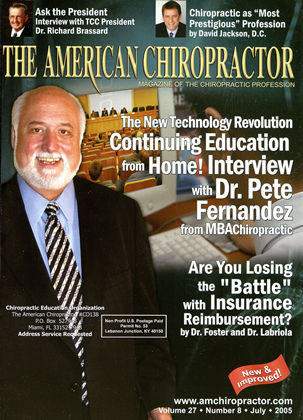The use of flexion and extension MRI in the evaluation of cervical spine trauma: initial experience in 100 trauma patients compared with 100 normal subjects Emergency Radiology (October 2002) 9: 249-253 Vincenzo Giuliano, Concetta Giuliano, Fabio Pinto. Mariano Scaglione Background information from Dan Murphy Subacute whiplash patients have about half the range of motion when compared to normal control subjects. In this study, the normal control sub jects showed that 4 percent had hypolordosis and 2 percent had disk hemiations. In this study, the whiplash injured pa tients showed that 98 percent had hypolordosis and 28 percent had disk hemiations. These authors note that plain film lat eral flexion and extension views to evaluate soft tissue and diskoli- gamentous injuries are poor, that videofluoroscopy is better, and that flexion and extension magnetic reso nance imaging (MRI) is best. In this study, the flexion/extension MRI's showed much pathology that was not seen with plain radiographs. Flexion/extension MRI shows the "pat tern of segmental motion." The "pattern of segmental motion" is normal in non-traumatic hypolordosis and non-traumatic disk herniation, but abnormal in post-traumatic hypo lordosis. In this study, 12-14 weeks after injury, the whiplash patients complained of neck pain, headache, arm pain and arm numbness. This is more evidence that not all patients recover in a period of 6-8 weeks. Flexion and extension MRI optimizes the functional significance of disk hemiations in symptomatic patients, offering a distinct advantage to con ventional MRI examinations per formed in the neutral position. These authors recommend flexion and extension MRI's in the clinical setting of subacute cervical spine trauma (more than 12 weeks following injury). The clinical indication includes persis tent neurologic deficit and clinical evi dence of instability despite normal ra diographs. 10.[Recent studies are showing that weight-bearing flexion/extension MRI's show more soft tissue pathology. Life Chiropractic College West now has an upright weight-bearing MRI unit: (510) 780-4500.| A 1978 graduate of Western States Chiropruc- lie College, Dr. Dan Murphy is on the faculty of Life Chiropractic College West, ami is the Vice President of the International Chiropractic Association. For more information, visit www. danmurphydc. com. MRI Flexion/Extension Study results with 100 Asymptomatic Controls and 100 diagnosed with Subacute Whiplash Loss of Cervical Lordosis Cervical Range of Motion, Flexion Cervical Range of Motion, Extension Disc Herniations 100 Asymptomatic Controls 4 percent 50 degrees; Range, 45-65 60 degrees Range, 50-70 2 percent 100 diagnosed with Subacute Whiplash2 98 percent 25 degrees, Range, 5-40 35 degrees Range, 20-50 28 percent
 View Full Issue
View Full Issue






